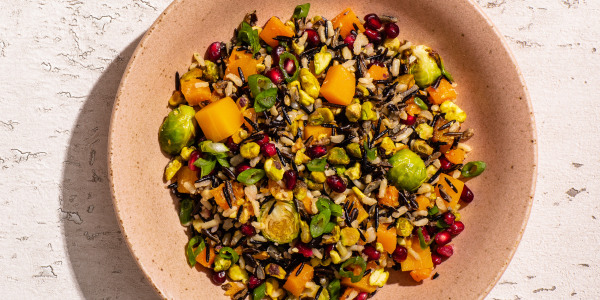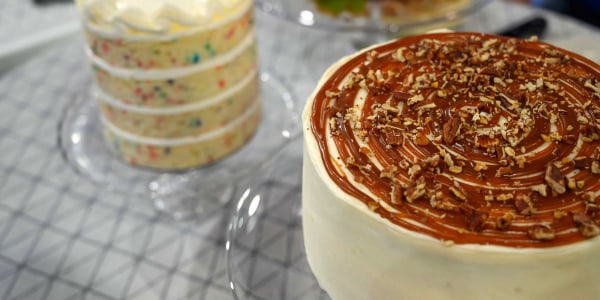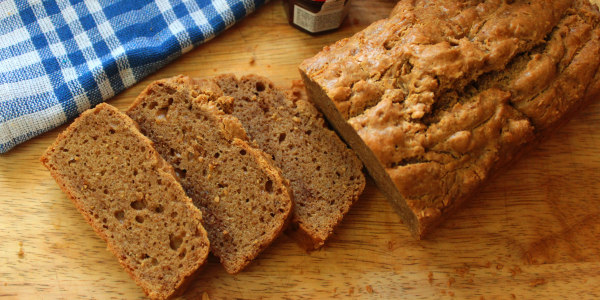There’s a reason most of us have a sweet tooth: Sugar is delicious, and it makes the food we eat truly enjoyable. And it does more than just sweeten our favorite desserts. It adds moisture and texture to baked goods; it helps make a tender crumb for cake; it helps cookies spread and caramelizes to make them brown; and it extends the shelf life of food by acting as a preservative.
But sugar (both white and brown) is full of empty calories that, when indulged in too much, can lead to diabetes and obesity. There are a variety of natural sugar substitutes that you can use instead of white or brown sugar. While they are still calorically dense, they do have additional nutrients that can make them a slightly better choice. Just remember: You still want to enjoy them in moderation.
Take note that for baking, you typically can’t just substitute a sugar alternative one-to-one with no other changes. You’ll need to adjust ratios of other ingredients to get the desired result you’re looking for. Sugar alternatives will also impart a different (but often tasty!) flavor, so you’ll want to keep in mind what’s most appropriate for what you’re making.
Date sugar
Date sugar is dehydrated, ground date. Because it is the whole fruit, it contains the vitamins, minerals, folic acid and fiber that you’d get from whole dates. It’s also two-thirds of the calories of white sugar and, thanks to the fiber content, it’s low on the glycemic index — meaning it won’t spike blood sugar when eaten in moderation.
How to use it: Date sugar is great in crisps, crumbles, sprinkled as a topping on yogurt and oatmeal, or even as a salad dressing sweetener. It’s also delicious in baked goods like spice cakes, carrot cakes, or anything that would benefit from that caramel-honey flavor you get from dates. You can substitute 2/3 of a cup for every 1 cup of white or brown sugar, but date sugar does tend to dry out baked goods, so compensate by increasing the moisture. Additionally, date sugar doesn’t dissolve during baking the way cane sugar does, so if you’re using it in batters, add boiling water to the date sugar to slightly dissolve it first.
Maple sugar
Maple sugar is maple syrup that’s dehydrated into light brown granules. It adds a rich caramel-maple flavor. It’s high in minerals like manganese, iron and potassium and lower in calories than sugar (30 calories compared to 48 per tablespoon). While one of the pricier sugar substitutes, maple sugar is truly delicious.
How to use it: Maple sugar is wonderful when used for homemade granola, in fruit compote or added to coffee. It can be used as a one-to-one replacement for sugar when baking, though you may want to cut it to 3/4 of a cup, because the flavor is really strong. You can use it for everything from brownies and cookies to cakes and pies, as long as you enjoy the taste of maple. Cut any other liquids in your recipe by 2 to 3 tablespoons to compensate.
Stevia
You’re probably pretty familiar with stevia, which has become pretty popular as a zero-calorie sugar substitute over the last several years. Stevia comes from the leaves of a South American shrub. It can be up to 300 times sweeter than sugar, has a slightly different flavor than sugar and does have an aftertaste that some find unpleasant.
How to use it: Use a very small sprinkle to sweeten drinks, oatmeal or yogurt. As a substitute in baked goods, you’ll want to use 1/4 to 1/2 teaspoon for every cup of sugar. You’ll need to reduce the amount of liquid in the recipe and replace the volume with ingredients like applesauce, pumpkin puree or powders like mesquite. The easiest thing to do is use recipes that already incorporate stevia.
Monk fruit
Monk fruit sweetener or extract comes from a small fruit grown in Southeast Asia called luo han guo. Juice from the fruit is dried into a powder, which can then be used as a sweetener. Monk fruit sweetener can be up to 300 times sweeter than sugar, but its sweetness actually comes from antioxidants called mogrosides rather than fructose or glucose. The result? Natural zero-calorie sweetness that has less of an impact on your blood sugar level.
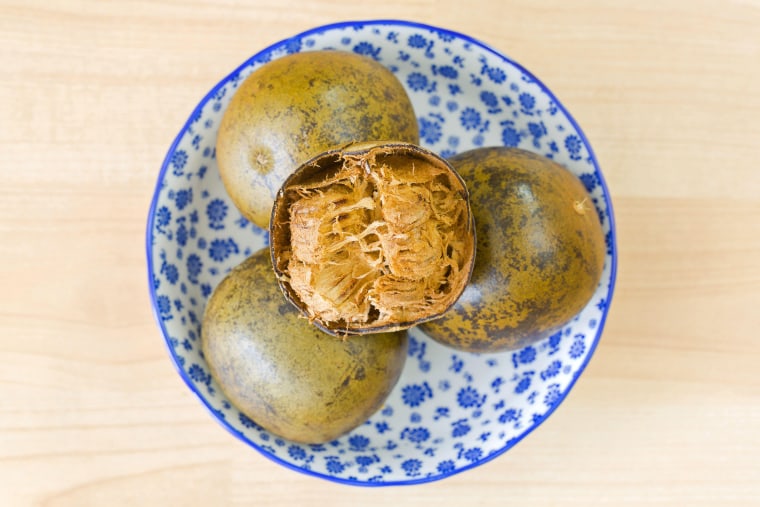
How to use it: Use just a tiny sprinkle in your coffee or tea or to sweeten oatmeal, frosting or dessert sauces. Baking can be a little tricky since monk fruit is so much sweeter than sugar, so you’d use much less, and you'd have to make up for the structure that you'd lose. Lakanto is a brand that blends monk fruit with other ingredients like tapioca fiber, chicory root inulin and erythritol to create a substitute that can be used as a one-to-one replacement for sugar without affecting the texture of what you’re baking.
Coconut sugar
Coconut everything has been all the rage over the last several years, and coconut sugar is no different. It comes from the sap of the coconut palm. While it has a caramely, molasses-like flavor that’s delicious, it’s unfortunately just as caloric as sugar, high in fructose (a no-go for diabetics) and has minimal health benefits. But, if you enjoy it sparingly, it really can make desserts sing.
How to use it: You can use coconut sugar in most of the same ways you use table sugar, replacing it one-to-one for white or brown sugar in recipes. Note that you will want to add some extra moisture to baked goods, particularly if you are replacing brown sugar, because coconut sugar will lead to a drier, denser end product.
Yacon syrup
Yacon syrup comes from the yacon plant, a South American root vegetable that looks similar to a yam. The rich, dark syrup contains a high level of fructooligosaccharides, a component that the body can’t easily digest, which serves as a gut-healthy prebiotic. Yacon syrup can help with satiety, so you stay fuller longer, it’s very low on the glycemic index (it clocks in at 1 on a scale of 1 to 100!) and it has about one-third of the calories of sugar. A note of caution: You definitely want to enjoy it in moderation, because overdoing it can lead to gas and other digestive issues.
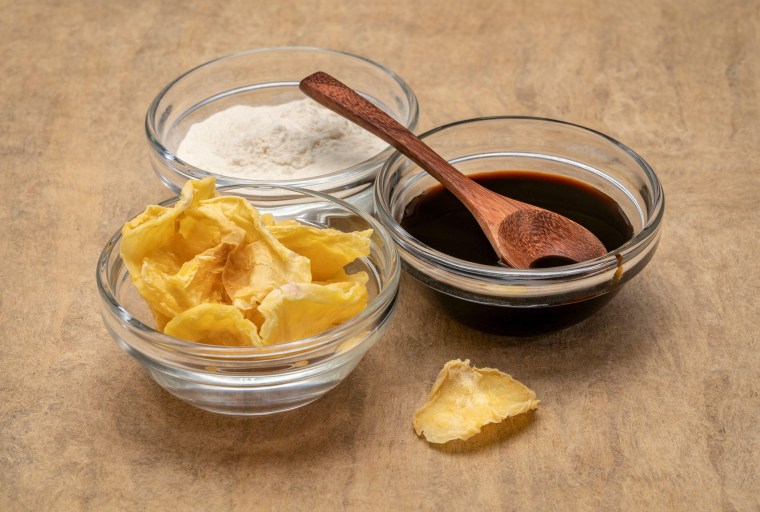
How to use it: Top your pancakes and waffles with yacon syrup, use it in sweet sauces, over yogurt or oatmeal and in smoothies. For baking, you can substitute a portion of the sugar with yacon syrup to help cut down on calories and lower the glycemic index of your dish.

